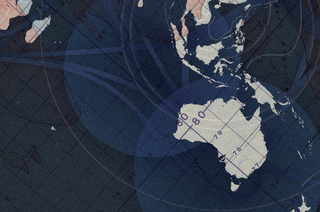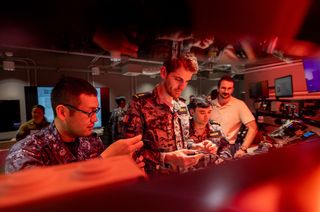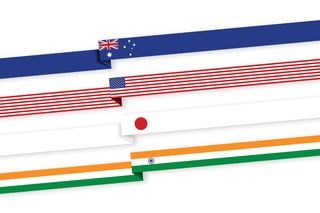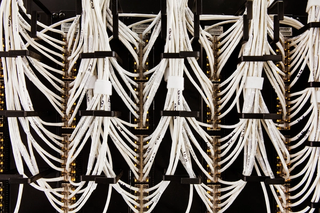On 15 January 2025, just days before leaving office, the Biden administration published the Framework for Artificial Intelligence Diffusion, otherwise known as the AI Diffusion Rule (hereafter, the AI rule). It aimed to introduce a global framework for regulating transactions involving advanced AI model weights and high-performance computing (semiconductor) chips. This marked a significant departure from more targeted controls on dual-use technologies towards a more expansive, extraterritorial US approach to AI export controls. However, the rule drew strong criticism from industry, allies and experts over its vague language, limited enforceability and potential to hinder innovation and international collaboration. In May 2025, the Trump administration rescinded the rule, a few days before it was due to come into effect.
With the rule now withdrawn, the United States sits at a critical juncture in redefining its strategy for controlling the export of advanced AI technologies. The rescission reflects a broader shift between administrations in how the US government intends to balance national security, global competitiveness and relationships with key allies. This explainer outlines how the AI Diffusion Rule evolved, why it was rescinded, and what might come next. In particular, it considers three policy pathways that may potentially eventuate as a replacement for the rule: (1) no new US global controls regime; (2) a revised, risk-based framework; or (3) an aggressive blanket rule with bilateral opt-outs. Each option reflects different trade-offs between enforceability, strategic control and international cooperation.
The Biden administration’s AI Diffusion Rule
The AI rule was issued by the United States Bureau of Industry and Security (BIS) under the Biden administration on 15 January 2025, with the delayed compliance requirements set to commence on 15 May 2025. The AI rule provided a new global framework for regulating any transactions (the export, re-export, and in-country transfer) of advanced artificial intelligence (AI) model weights and high-performance computing integrated circuits. In simple terms, the rule sought to control the movement of advanced AI models and semiconductors across the globe.
In particular, the AI rule introduced a tiered, risk-based framework that would be applied globally. It established new licensing requirements and export controls based not only on destination countries, but also on the sensitivity of the AI systems or compute (GPUs or chips used to train models) being transferred.
Countries were categorised into three tiers, each with differing levels of access and compliance requirements for importing advanced AI chips and certain AI model weights (see Table 1). Tier 1 comprised the United States and 18 key allies and technology partners. These entities in these jurisdictions would face minimal import restrictions and could access eligible advanced computing chips without a licence, provided they certify compliance with the defined security and storage requirements. Tier 2 comprised most other countries outside of Tier 1 and Tier 3. Companies in these jurisdictions could be part of transactions involving controlled items (i.e. chips and model weights) through specific licensing pathways, including participation in the Validated End-User (VEU) program or under limited-volume exemptions. The VEU program is an initiative that facilitates the trade and transfers of certain technology to pre-approved companies in specific countries without needing individual export licenses for each transfer. Tier 3 consisted of US arms-embargoed countries (collectively known as Group D:5) and Macau. Countries in Tier 3 are subjected to continued restrictions on the import of advanced AI semiconductors and model weights.
The AI rule also imposed quantitative caps and geographic limits on the deployment of compute — the computational power, such as high-performance semiconductor chips, used to train and operate advanced AI models — particularly for US companies. For example, through the VEU program, companies headquartered in Tier 1 countries were restricted from deploying (placing) more than 25% of their total AI compute in countries outside Tier 1 jurisdictions. Of that, no more than seven per cent could be in any single Tier 2 country. Further, US-headquartered companies were required to retain at least 50% of their computing capacity domestically. These ratios were designed to strike a balance between supporting US companies in exporting their technologies and preventing the immediate buildup of frontier AI capabilities in Tier 2 countries — jurisdictions that present a moderate security risk profile.
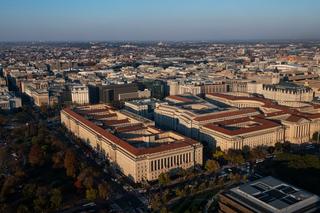
The AI rule was built on prior controls that had identified semiconductors — the computing hardware on which AI is trained — and equipment for their manufacture as the key supply chain chokepoints over which the US could exert greatest control. However, for the first time, the AI rule also regulated AI model weights. AI model weights are the essence of an AI model — the parameters established during the machine learning model’s training runs, which determine the relative importance of different features in the data. These model weights are the model’s learned intelligence, enabling it to recognise patterns, make predictions and generate the responses consumers then receive.
The national security logic behind the AI Diffusion Rule
The culmination of years of policy development, the AI rule was the most ambitious effort yet by the US Government to employ strategic trade controls (often referred to as export controls) to manage access to critical technologies.
Fundamentally, US export controls are designed to protect and promote the country’s national security interests and foreign policy objectives through a range of licensing systems and multilateral arrangements. Traditionally, both during and following the Cold War, this manifested in efforts to prevent the proliferation of weapons of mass destruction, as well as excessive stockpiling of other conventional weapons and related goods, in countries that would run counter to US interests and priorities. Historically, such controls were applied in a relatively universal fashion — indiscriminately applied to allies and adversaries.
However, since the late 2000s, the role of critical and emerging technologies in national security has received increased attention. Semiconductors and AI models, but also quantum, biotechnology and clean technologies, have taken centre stage. Such changes raise significant questions of whether binaries between military and civilian technologies still hold and implications for the logic and use of strategic trade controls. This was outlined in a defining 2022 speech by Biden’s National Security Advisor Jake Sullivan, casting these technologies as “force multipliers” that will define the geopolitical landscape in the coming decades, one whose defining feature will be US-China competition. In the same speech, Sullivan stated that US leadership in these technologies was a “national security imperative.” Drawing this logic to its conclusion, former BIS Assistant Secretary Kevin Wolf, while in Australia with the United States Studies Centre, outlined that the Biden administration had decided in its assessment that “AI applications are as sensitive as nuclear weapons” and therefore should be regulated as such. While alarm bells have been rung over the existential risk potential behind AI — equated to the complete nuclear annihilation of the human race — here, the suggestion is more so regarding the technology’s sensitivity and enabling capacity than its actual destructive capacity.
The focus on technology as an enabler of national security has caused the United States to be increasingly forward-leaning in its use of export controls. In particular, such controls now extend far beyond their traditional remits, imposing restrictions on the flows of general-purpose technologies like AI. A range of ever-more extraterritorial efforts, culminating in the banning of Huawei chips in August 2020 and sanctions against Russia in early 2022, drew attention to the authority granted by legislation and the powerful instruments — principally the Foreign Direct Product Rule — available to BIS. The gradual expansion beyond single-firm, single-nation and single-use actions laid the groundwork for export controls to become a key instrument in the United States’ regulatory arsenal for controlling the flows of previously unregulated technologies. The first full salvo of export controls that embraced this tool with a newfound zeal for targeting dual-use technologies arrived midway through the Biden administration in October 2022, implementing unprecedented restrictions on semiconductor and other associated technology exports to China. These controls were amended and supplemented in the following two years with more expansive controls and other actions, including outbound investment screening mechanisms (See Figure 1).
The AI rule marked a distinct departure from these previous iterations of AI-centred export controls, which had focused primarily on a limited set of destination countries. Instead, it introduced global controls aimed at managing the international diffusion or proliferation of sensitive AI technologies. These measures were designed not only to support national security and foreign policy objectives but also to preserve the perceived strategic advantage that the United States and its allies currently hold in AI development over China.
A key concern was that other, less-secure countries could take away the United States’ advantage — offshoring advanced AI compute and model training infrastructure to jurisdictions with fewer regulatory safeguards or more ambiguous strategic alignments that may run counter to US national security objectives. For example, while not adversaries, certain Gulf states, such as Saudi Arabia and the United Arab Emirates, with deep capital pools and readily available energy, have the potential to compete with the United States and offshore the frontier AI training infrastructure used by the leading (particularly US) AI companies. Advocatesargue that such offshoring would expose leading AI companies to security risks and potentially exacerbate issues with chip-smuggling and indirect diffusion — with Tier 3 countries accessing frontier AI training infrastructure through intermediaries that lack the appropriate security standards. Such concerns were a key driver of the AI rule’s emphasis on global applicability.
It reflected a growing recognition that the misuse of emerging technologies threatened not just national security but posed grave risks to democratic processes and institutions, and could “weaken the rules-based international order.”
As pre-existing tools like export controls have been applied to new technologies, especially AI and semiconductors, it has introduced a certain tension at the political level: competing logics exist between seeking to control or protect a higher number of goods, yet there is also an intent to increasingly share with a subset of close allies and partners. Reforms to export controls in recent years under the banner of AUKUS offers a particular example, with the ambition of a license-free environment between the three countries. Such dynamics are compounded when it comes to AI technologies, where commercial interests in sales and the economic potential of the technology, as well as ambitions in facilitating sales to like-minded countries, must be considered against security risks.
In its creation, the AI rule was the culmination of a decades-long reconceptualisation of national security. It reflected a growing recognition that the misuse of emerging technologies threatened not just national security but posed grave risks to democratic processes and institutions, and could “weaken the rules-based international order.”
Why was the AI rule rescinded?
On 13 May 2025, the Trump administration’s Department of Commerce formally rescinded the AI Diffusion Rule. The decision followed sustained industry pressure against the rule’s implementation and marked a shift in the United States’ export control strategy for advanced AI technologies. In explaining the rescission, BIS asserted that the new requirements set out in the AI rule were overly bureaucratic and would have both “stifled American innovation” and undermined US relations with key allies. Indeed, one of the key criticisms of the AI rule was that it treated strategic partners, such as NATO allies like Portugal and Austria, as secondary by classifying them as ’Tier 2’ and limiting their access to semiconductors made with American technology.
Compounding this was the monumental challenge of enforcement. While export controls typically rely on industry self-reporting, this approach becomes more complex as a broader range of companies become captured under the scope of regulation. Indeed, the AI rule’s attempt to regulate the transfer of AI model weights across the tier groupings with varying levels of computing power makes it more challenging to effectively control the flow of technology. Further, the inverse relationship between the extraterritorial reach of export controls and their enforceability made achieving the AI rule’s intended national security and non-proliferation objectives highly uncertain.
Against this context, the question of institutional capacity is a particular concern. As shown in Figure 2a, while overall volumes of license applications processed by BIS has remained steady, average processing days have increased significantly — reaching a high of 38 days in 2023 (Figure 2a) — as well as the number of administrative actions taken (Figure 2b). Meanwhile, BIS personnel figures have only seen marginally increases in recent years (Figure 3a). Even with the AI rule rescinded, BIS has requested record funding levels in its FY2026 budget — an increase of 50% — to add 200 additional Export Enforcement Special Agents (see Figures 3a and 3b).
US companies also worried about the effects that the rule would have on their competitiveness abroad. Major US technology firms, such as NVIDIA, Microsoft and Oracle, warned that the AI rule’s controls would hinder their ability to operate and compete in foreign markets effectively. It would reduce the competitiveness of American firms in serving even trusted markets, diminish their revenue streams and prove ineffective in curbing technological advancements among potential adversaries. As Ned Finkle, NVIDIA’s Vice President of External Affairs, stated in January 2025, “[The AI Diffusion Rule] threatens to squander America’s hard-won technological advantage… Rather than mitigate any threat, the new Biden rules would only weaken America’s global competitiveness, undermining the innovation that has kept the US ahead.” These US firms contended that the Biden administration’s AI rule was out of step with the United States’ broader economic and strategic goals. This was echoed by BIS Under Secretary Kessler, who recently labelled the AI rule as “divorced from commercial reality.” and by the White House AI Czar David Sacks, who stated “We rescinded that Biden diffusion rule, which...made diffusion a bad word. Diffusion of our technology should be a good word.”
On the same day that the Trump administration rescinded the rule, BIS released three new guidance documents:
- Guidance on Application of General Prohibition 10 (GP10) to People’s Republic of China (PRC) Advanced-Computing Integrated Circuits (ICs), which highlighted the risks associated with using Chinese advanced computing semiconductors (integrated circuits), such as Huawei’s Ascend chips;
- BIS Policy Statement on Controls that May Apply to Advanced Computing Integrated Circuits and Other Commodities Used to Train AI Models, warning against using US chips for training or inference of Chinese AI models; and
- Industry Guidance to Prevent Diversion of Advanced Computing Integrated Circuits, which offered best practices to prevent diversion of US AI components, with a focus on protecting supply chains and avoiding circumvention of export controls.
These documents outlined ongoing national security concerns and reaffirmed the strategic rationale that had underpinned the AI rule. This signalled that while a formal replacement has not yet been issued, the underlying logic remains under the Trump administration.
To an extent, these three guidance documents also reflect — and play into — broader trade policy dynamics between China and the United States. These documents were released shortly after the US-China trade talks in Geneva on tariff negotiations and included a warning that the use of Huawei AI chips “anywhere in the world” would violate US export controls. This language triggered criticism from China, which accused the United States of undermining the trade talks. In response, the US Department of Commerce amended the guidance, removing the global application language and instead emphasising the potential “risks” of such chips in violating export controls. While the revision marked a change driven by diplomacy, China has continued to view the guidance as a discriminatory trade measure. A key pillar to a June 2025 US-China agreement was the United States removing restrictions on the export of chip design software EDA to China in exchange for rare earth exports, again bringing export restrictions into broader trade policy. This ultimately highlights the growing intersection between national security regulations and strategic trade negotiations, particularly as AI becomes a centrepoint of geopolitical tension.
These new guidance measures ultimately indicate that the Trump administration recognises the significant security implications of AI, even if it will take its own approach to addressing these, including through recalibrating American export controls. The restriction on H20 semiconductor chips is a key example. Initially designed by NVIDIA to comply with earlier US export restrictions, the H20 was a lower-performance alternative to the H100 (one of the best current GPU offerings for AI training) and was tailored especially for the Chinese market. However, on 15 April, the Trump administration extended earlier restrictions to include the H20, citing concerns that it can significantly advance China’s AI capabilities. However, on 17 July, the administration again reversed course — confirming with NVIDIA that its license applications for H20 chipsexports to China would be approved. This inconsistency reflects the tension between recognition that even less-advanced newchips can offer significant capability benefits when run with certain efficiency innovations in AI training and the commercial interests of American AI and chip companies.
Abolition, revision or deal-making: The future of US chip export controls
Following the repeal of the AI rule, the US Department of Commerce’s BIS committed to introducing a simpler framework aimed at promoting American innovation and maintaining US leadership in artificial intelligence — but without a clear timeline for when this may eventuate. While there has been no signal as to what form it may take, any replacement is likely to broadly reflect the strategic objectives that underpinned the original rule. It will likely continue to facilitate access to US AI technologies for trusted partners while keeping it “out of the hands” of geopolitical adversaries, as set out by BIS Under Secretary Jeffrey Kessler. Such intent was echoed by Vice President JD Vance at the AI Summit in February 2025, where he signalled a push to avoid an “overly precautionary regulatory regime” while “safeguard[ing] American AI and chip technologies from theft and misuse” by adversaries. Leading US companies will continue to push for lighter, less complex rules that “prioritize bringing American AI to the world”, particularly to ‘Tier 2’ country markets that might otherwise look to China for AI technologies.
The United States now sits at an inflection point in the strategy and design of its AI export controls. Three primary policy pathways emerge as potential replacements for the rescinded rule:
- maintaining the status quo, with no new global control regime;
- creating a revised, risk-based export control framework; or
- implementing an aggressive blanket diffusion rule with bilateral opt-outs.
At this stage, there is no clear indication which of these is likely to become BIS policy. Other factors, including shifting international relations and ongoing trade deal negotiations, are likely to influence the final shape of any new regulation. Each of the three pathways is examined briefly below.
Holding still: No replacement global regime and maintaining only country- and firm-specific controls
This pathway would not constitute a complete deregulation of AI exports but rather a reversion to the regulatory measures first introduced in October 2022. Under this pathway, existing export controls would continue to apply to arms-embargoed countries and high-risk jurisdictions where diversion of chips to military or authoritarian uses is likely. However, most other countries — including US allies and many emerging economies — would face minimal regulatory barriers. While this approach reduces complexity and aligns with industry demands for simplified compliance in global transactions, it fails to fully address broader concerns around chip smuggling via intermediaries or the uncontrolled global proliferation of advanced AI models. An additional concern is that country-specific controls may not be sufficient to prevent circumvention, especially when the chips that are designed to meet regulatory thresholds are still able to train frontier models. For example, China’s DeepSeek R1 reportedly achieved GPT-4 level performance using less advanced chips, demonstrating how even constrained exports can still be effectively leveraged with innovations in model training and chip management.
Releasing a revised ‘AI Diffusion Rule’ with tweaked criteria, thresholds or tiers to reflect international or industry interests
This would maintain the overarching architecture of export controls, but likely with some restrictions either for US industry or for countries that do not pose significant security risks. In doing so, it preserves the strategic objectives of the original rule while responding to criticisms about its complexity and inflexibility. A number of US actors, including think tanks such as the RAND Corporation and the Carnegie Endowment for International Peace, have offered detailed proposals for such a model. These include expanding the group of preferred, or ‘Tier 1’, countries and establishing transparent mechanisms for countries to move up tiers based on demonstrated compliance, adoption of technical safeguards and alignment with US strategic interests. Additional recommendations include lowering the threshold for license-free exports of AI chips to Tier 2 countries, increasing export limits for key US allies and allowing trusted companies to deploy larger chip volumes per jurisdiction. These measures would likely create incentives for countries to adopt more robust security practices, reduce reliance on high-risk vendors and reinforce a cooperative, rules-based framework for the US’ global governance of semiconductors.
Re-introduce a stricter global baseline control (i.e. Tier 2), with exemptions via bilateral deals.
The third potential pathway involves the introduction of a more restrictive global baseline for AI export controls, with provisions to allow individual countries to negotiate exemptions through bilateral negotiations. Under this approach, a default set of stricter export controls would apply globally (e.g. at the prior ‘Tier 2’ level), but individual governments could secure exemptions through formal agreements with the United States. This approach would impose strict, comprehensive export restrictions as a baseline, in line with the original rule, while leaving the window open for negotiation and the extraction of other strategic benefits in exchange for chips. It would mirror the trade policy practices increasingly favoured by the Trump administration. Such agreements could involve technology safeguards, investment incentives or shared R&D frameworks. However, it may also risk regulatory fragmentation and favouritism, reducing predictability for industry and complicating global coordination.
Each of these pathways strikes a distinct balance between strategic imperatives and economic interests. The eventual policy direction adopted by the United States will not only shape the governance of semiconductor transactions globally but also set an important precedent for the international regulation of strategic technologies.
What are the implications for Australia and allies?
Under the original AI Diffusion Rule, Australia stood to benefit from reduced global competition for access to US frontier chips. Indeed, by being grouped among a small cohort of 18 ‘Tier 1’ countries, Australia would have gained preferential access to advanced semiconductors while many other jurisdictions faced higher regulatory barriers. This exclusivity would have potentially helped Australia attract AI talent, investment and infrastructure as part of a smaller diffusion network. With the AI rule now rescinded, however, the competition to attract AI infrastructure is once again truly global. Australia must compete with 192 other countries. The rescission of the AI rule signals a shift from a rules-based export control framework — itself the culmination of a decade-long reconstitution of national security — to a more discretionary, less-comprehensive model of technology governance. Rather than relying on tiered classifications, countries must now demonstrate ongoing political, legal and cybersecurity alignment with the new US administration’s objectives, as well as the requisite capital to maintain a favourable status and attract chip investment. This dynamic may incentivise closer policy convergence with the United States on issues such as export controls, technology standards and broader AI policy, while also increasing the risk of fragmentation among allies if bilateral terms diverge.
For Australia and its partners, the rescission of the AI rule elevates the importance of diplomatic alignment and strategic trust in securing continued access to critical technologies from the United States. If Australia wants to remain part of a privileged diffusion network for advanced AI and computing technologies, it must strengthen its domestic capabilities to prevent both technological infiltration and exfiltration — an imperative that stands regardless of US policy shifts. This includes improving the security and traceability of chip supply chains and reducing foreign interference risks in research institutions and critical technology sectors. Without credible safeguards, Australia may be viewed as a vulnerability rather than a trusted partner in the emerging global AI-related export control architecture. More broadly, the rescission of the US AI rule underscores the need for Australia to stay proactive in shaping AI governance norms and to invest in the institutional capacity required to operate within a more fluid and complex global technological order.

